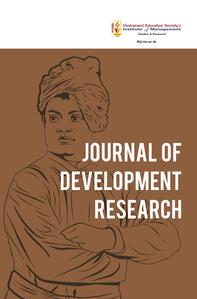
1The Bombay International School, Mumbai, Maharashtra, India

Creative Commons Non Commercial CC BY-NC: This article is distributed under the terms of the Creative Commons Attribution-NonCommercial 4.0 License (http://www.creativecommons.org/licenses/by-nc/4.0/) which permits non-Commercial use, reproduction and distribution of the work without further permission provided the original work is attributed.
Sustainability has become an integral part of the United Nations’ development goals to ensure that the usage of resources in the present does not deplete the quality or quantity of resources available for future generations. The importance of sustainable agricultural practices has increased by manifolds when combating environmental and food security challenges. Rice cultivation in India alone comprises 26% of global rice production hence alternative rice farming methods are being explored for their potential contribution to fulfilling the Sustainable Development Goals (SDGs) and ensuring that the agrarian economy in India is growing at a sustainable rate.i This study aims to analyse the extent to which alternative sustainable rice cultivation methods (Alternative Wetting and Drying [AWD] and Direct Seeded Rice [DSR]) align with Social Development goals and impact the Indian economy. The research employs a qualitative analysis of secondary data from academic journals, government reports, and industry publications to evaluate the environmental and economic impacts of sustainable rice farming methods. The findings indicate that practices such as DSR and AWD significantly reduce water usage, lower greenhouse gas emissions, and improve soil health aligning with the SDGs (specifically SDG 12 [Responsible Consumption and Production] SDG 13 [Climate Change] and SDG 15 [Life on Earth]). Additionally, these practices are shown to offer long-term economic benefits for farmers through increased yields and reduced input costs and provide an external benefit to society by reducing the harmful impact of the wastage of water and greenhouse gas emissions on the environment. This study also discusses various government policies and private-sector projects that have incentivised farmers to adopt these sustainable rice cultivation practices. This research contributes to a deeper understanding of how sustainable agricultural practices can be leveraged to achieve global sustainability goals, offering a model for integrating environmental and economic objectives in agricultural policy.
Economics, rice farming, sustainable development goals, sustainable growth
Achard, S. (2024, August 6). Bayer Group reports increased sales and focuses on agriculture segment in Q2 2024. IGrow News. Retrieved August 11, 2024, from, igrownews.com/bayer-crop-science-news/
Bhatia, A., Jain, N., & Pathak, H. (2013). Methane and nitrous oxide emissions from Indian rice paddies, agricultural soils and crop residue burning. Greenhouse Gases: Science and Technology, 3(3), 196–211, Retrieved April 24, 2019, from https://doi.org/10.1002/ghg.1339
Dawe, G., Jucker, R., & Martin, S. (2005). Sustainable development in higher education current practice and future developments a report for the higher education academy. Heslington Higher Education Academy.
DIRECT SEEDED RICE CONSORTIUM - What is DSR? Dsrc.irri.org, dsrc.irri.org/our-work/what-is-dsr
Kilveira, F. (2023). Issue 5 • 1000370 J Rice Res, an Open Access Journal Citation: Kilveira F (2023) Rice innovation: paving the way for a sustainable future. J Rice Res, 11, 370. www.omicsonline.org/open-access-pdfs/rice-innovation-paving-the-way-for-a-sustainable-future.pdf. Retrieved August 11, 2024, from, https://doi.org/10.4172/2375-4337.1000370
Lampayan, R. M., Rejesus, R. M., Singleton, G. R., & Bouman, B. A. M. (2015). Adoption and economics of alternate wetting and drying water management for irrigated lowland rice. Field Crops Research, 170, 95–108. https://doi.org/10.1016/j.fcr.2014.10.013
The Better India.(2024 February 14). The Better India on LinkedIn: #Betterlifestories. LinkedIn. Retrieved August 11, 2024, from www.linkedin.com/feed/update/urn:li:activity:7163412044006858752/
Times Agriculture. (2021, April 2). Advantages disadvantages of direct seeding rice (DSR). Retrieved from timesagriculture.com/advantages-and-disadvantages-of-direct-seeding-rice-dsr/
United Nations. (2023). Goal 13 | Department of Economic and Social Affairs. United Nations. sdgs.un.org/goals/goal13#targets_and_indicators.
WeADAPT. (n.d.). Climate-smart land use insight brief No. 2: Alternate wetting adaptation drying for climate change mitigation livelihoods. Retrieved from weadapt.org/knowledge-base/climate-food-security-and-agriculture/alternate-wetting-
and-drying-for-climate-change-adaptation-mitigation-and-livelihoods/.